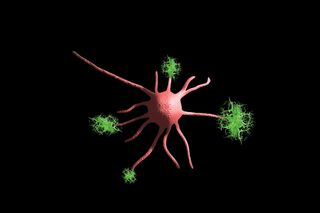Memory
Walking Builds the Aging Brain’s Structure and Mental Acuity
Forty-minute walks develop brain tissue and keep you sharp as you age.
Posted June 21, 2022 Reviewed by Ekua Hagan
Key points
- A new study shows those who walk 40 minutes a day a few times a week are more aerobically fit and do better on memory tests than non-walkers.
- The study specifically showed walking resulted in a greater volume of white matter and significant increases in the brain’s prefrontal cortex.
- A corollary of this research is that a declining gait may be an early marker of brain degeneration.

The brain is made of neural networks that have two parts. The “white matter” is the wiring that connects the cellular “gray matter” of neurons and dendrites. In sedentary individuals, white matter shrivels and shrinks with age—the clinical correlation of which can be memory loss, word-finding difficulty, and an overall decline in cognition known as dementia.
Physically active individuals, by contrast, keep their white matter robust. Increased physical activity can even expand the amount you have to work with.
Our brains are dynamic, constantly reorganizing themselves in response to motor feedback and sensory inputs. Our neural networks self-calibrate, self-assemble, and adapt to stimulation, experience, and context.
This is a remarkable example of plasticity (Greek, plastikos means “to mold”) because the fact that adult brains can change at all is a fairly recent discovery. Dogma well into the 1990s held that adult brains were incapable of growing new nerve cells and changing their patterns of ingrained behavior and habits. Conventional wisdom said you were born with all the brain cells you would ever have, meaning that your brain would inevitably decline with age.
Today, neurogenesis—the creation of new brain cells—is now well-known to take place in several regions, especially the hippocampus, which is responsible for forming new short-term memories that are then transferred to the cortex for long-term retrieval. A surprising result of neurogenesis studies is that exercise amplifies the effect. In both rats and people, aerobic exercise results in greater brain volume.
A multi-institutional study led by Colorado State University looked at 250 older individuals who were sedentary but otherwise normal. They all took baseline scans and then were split into three groups. The first (the control group) did stretching and balance exercises three times a week. The second test group walked briskly 3 times a week for 40 minutes, while the third comparison group took up line dancing and collective choreography 3 times a week. After 6 months, each group underwent follow-up scans.
Objectively, both the walkers and dancers were more aerobically fit. And while both cohorts now had larger white mater connections, the increase was most prominent in the walkers. Walkers also boosted their performance on memory tests whereas the dancers did not. Meanwhile, members of the control group who had not exercised aerobically at all showed thinning white matter and falling cognitive scores.

The results (and those from similar studies) indicate that white matter remains malleable and active no matter what one’s age, and that a few brisk 40-minute walks a week might be sufficient to prevent memory decline.
The study also demonstrates how science is counterintuitive. That is, it is often hazardous to rely on “it stands to reason” thinking rather than actual experimentation that produces hard facts. It might seem like common sense that if a little aerobic effort is good, then more, such as dancing or even running, must be better.
But this proved not to be true. It was walking that resulted not just in a greater volume of white matter but also significant increases in the brain’s prefrontal cortex. The prefrontal cortex is involved in judgment, reasoning, planning, and temperament—and it is one of the first areas to decline in various forms of dementia. In addition to reducing dementia risk, the comparative health of immune cells within the central nervous system (microglia) that deal with infections and inflammation is high in those who lead more active lifestyles.
A surprising corollary of this research can act as a warning: Namely, a declining gait may be an early marker of brain degeneration, particularly hippocampal atrophy and ventricular enlargement. The high cost in terms of energy needed for mobility is associated with declining gait speed, and slow gait is linked to cognitive decline and Alzheimer’s disease.
We still aren’t completely sure why exercise leads to heftier brain tissue and better thinking, but simply walking can keep you sharp as you age.
References
1. Casaletto, K.B., et al., Microglial Correlates of Late Life Physical Activity: Relationship with Synaptic and Cognitive Aging in Older Adults. The Journal of Neuroscience, 2022. 42(2): p. 288-298. doi: 10.1523/jneurosci.1483-21.2021.
2. Bishnoi, A., R. Holtzer, and M.E. Hernandez, Brain activation changes while walking in adults with and without neurological disease: systematic review and meta-analysis of functional near-infrared spectroscopy studies. Brain Sciences, 2021. 11(3): p. 291
3. Mendez Colmenares, A., et al., White matter plasticity in healthy older adults: The effects of aerobic exercise. NeuroImage, 2021/10/01/, 2021. 239: p. 118305. doi: https://doi.org/10.1016/j.neuroimage.2021.118305.
4. Dougherty, R.J., et al., Energetic Cost of Walking and Brain Atrophy in Mid-to-Late Life. The Journals of Gerontology: Series A, 2021. doi: 10.1093/gerona/glab309.



